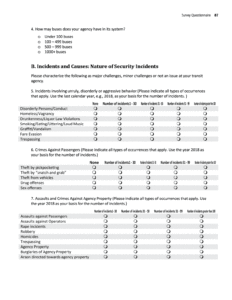Video surveillance is becoming increasingly common in workplaces as a way to deter crime, improve safety, and monitor employee behavior. However, video surveillance can also raise concerns about privacy and employee rights. A well-written workplace video surveillance policy can help to address these concerns and ensure that video surveillance is used in a fair and ethical manner.
Workplace video surveillance policy template can provide a starting point for businesses that are considering implementing a video surveillance system. These templates typically include provisions on the following topics:
- The purpose of the video surveillance system
- The areas of the workplace that will be monitored
- The types of activities that will be recorded
- The length of time that recordings will be stored
- The procedures for accessing and viewing recordings
- The rights of employees regarding video surveillance
Legal Considerations
When developing a workplace video surveillance policy, it is important to consider the relevant legal requirements. These requirements may vary depending on the jurisdiction in which the business is located. Some of the key legal considerations that businesses should be aware of include:
Privacy laws: Video surveillance can implicate privacy laws, which may restrict the collection, use, and disclosure of personal information. Businesses should ensure that their video surveillance policy complies with all applicable privacy laws.
Labor laws: Video surveillance can also implicate labor laws, which may protect employees’ rights to privacy and due process. Businesses should ensure that their video surveillance policy does not violate any applicable labor laws.
Surveillance Disclosure Requirements: Some jurisdictions require employers to provide notice to employees and obtain their consent before implementing video surveillance. Make sure to research and comply with any applicable disclosure requirements in your area.
Implementation and Training
Once a workplace video surveillance policy has been developed, it is important to implement the policy effectively. This includes providing training to employees on the policy and the procedures for accessing and viewing recordings. Additionally, businesses should regularly review and update their video surveillance policy to ensure that it remains effective.
Employee Training: Train employees on the purpose, scope, and limitations of the video surveillance system. Ensure that they understand their rights and responsibilities regarding video surveillance.
Regular Audits: Establish a system for periodic audits of the video surveillance system to ensure compliance with the policy and applicable laws. Address any identified issues promptly.
FAQs
1. Who is responsible for overseeing the implementation of the video surveillance policy?
The responsibility for overseeing the implementation of the video surveillance policy should be clearly defined in the policy itself. This may be assigned to a specific individual or department, such as the human resources department or the security department.
2. What are the potential consequences of violating the video surveillance policy?
The consequences of violating the video surveillance policy should be clearly stated in the policy itself. These consequences may vary depending on the severity of the violation and may include disciplinary action, up to and including termination of employment.
3. How can employees file a complaint about a violation of the video surveillance policy?
The policy should provide a clear process for employees to file a complaint about a violation of the video surveillance policy. This process should be easily accessible to employees and should provide a fair and impartial mechanism for resolving complaints.

